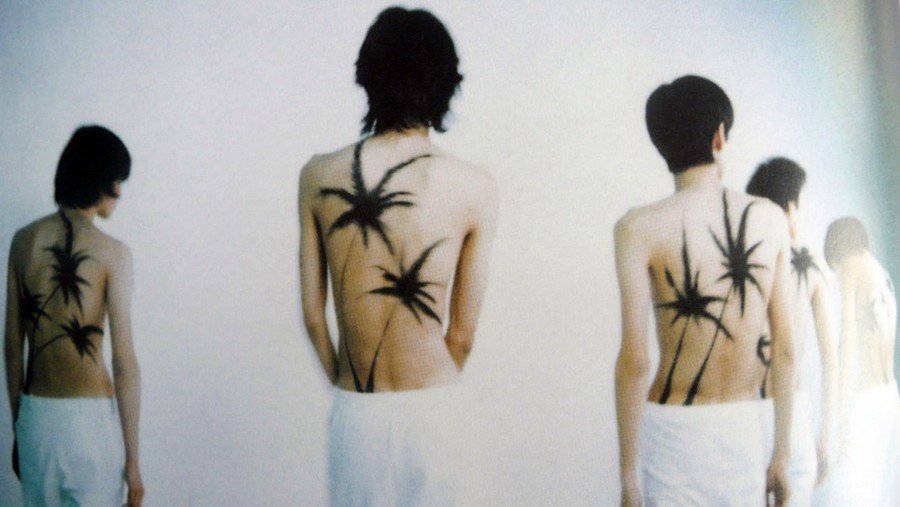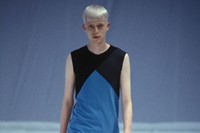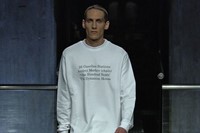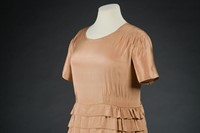We consider the Modemuseum Hasselt's substantial Raf Simons archive
Fashion journalists invariably tag Raf Simons with the "Belgian designer" identity, often taking for granted his link to Antwerp. Though indeed he interned at Walter Van Beirendonk there, an interesting diversion from the beaten path is what gives attentive critics a clue as to where Simons’ edge might find its source. Simons studied industrial design in Genk, a Belgian city located in the province of Limburg. Much like Simons, Martin Margiela’s roots in Limburg often also go unmentioned, an aberration that’s being corrected by the region’s fashion museum. Modemuseum Hasselt (MMH) recently became the fresh owners of a substantial Raf Simons archive, part of which will be on show in the exhibition Dressing the 20th Century, alongside exceptional masterpieces from other key designers who’ve defined the 20th century fashion landscape. The exhibition focuses on a number of Limburg designers within the era’s context, creating the possibility to explore their legacies from a regional perspective. Here co-ordinator and curator Kenneth Ramaekers talks about this important milestone in the museum’s mission to conserve the creations of its home-grown fashion talent.
The acquisition of these Raf Simons archive pieces is part of a larger mission of MMH to give fashion designers from the Limburg region extra attention. Why does it make sense to approach fashion from a local perspective?
Every museum operates a different acquisition policy that matches its overall collection profile. We’ve chosen to collect Western fashion from 1750 until today, with a specific focus on a number of divisions. One of these sub-divisions is that of Limburg-born fashion designers. It turns out that we have quite a few fashion talents originating from our province. Martin Margiela, Dirk Bikkembergs and Raf Simons are amongst our most famous flag-bearers. But not to be overlooked are Bart Vandebosch of the label Les Hommes, Marjolein Van den Heuvel, Stijn Helsen, Joke Houbrechts of the former brand Kyuso, and more recently Ti+Hann and Sofie Claes. As a fashion museum situated in Limburg it would be impossible not to devote particular attention to this. The purchase of the Raf Simons archive pieces is perfectly in keeping with the museum’s set of objectives.
Does it follow that there are common aesthetic characteristics to be found in the work of these designers?
I don’t immediately see common design characteristics. If there is any common influence, then that would be more assignable to a particular education, but this is actually also problematic, as Raf Simons studied industrial design in Genk and Martin Mariela and Bikkenbergs studied Fashion Design in Antwerp.
"Raf insisted on selecting and composing the silhouettes personally for us"
How did Raf Simons respond to your request?
Very positively. He insisted on selecting and composing the silhouettes personally for us. The result is a total of 34 silhouettes that give an overview of his work from 1995 until spring-summer 2009. Raf added a 35th silhouette to that just recently, as he found it crucial to make the collection more exhaustive. To be honest, it was self-evident to me that this archive would end up here. But when I became aware of similar interest from the Arts Décoratifs in Paris and from Japan, I feared our plans might fall through for various reasons. Luckily, Raf was convinced that the pieces had to come to us.
What did he base his selection on?
Primarily he selected the most representative pieces. He picked out on average two silhouettes per season that give a clear impression of his collection for that season. Some pieces are very unique and it wasn’t always easy for Raf to part with them. For example, we’ve acquired two silhouettes from his debut collection, the "First Collection", but also his David Bowie t-shirt look from SS’96 and the only womens’s outfit he ever put out with his own label in SS’97.
What’s Raf Simons’ contribution to the exhibition Dressing the 20th Century as a whole?
We aimed to illustrate the evolution in women’s fashion from 1900 until today and more specifically the personal influence of designers in the 20th century. We’ll show a part of the sub-division of Limburg designers for the first time. They’ve had a big impact on the construction of the identity of Belgian designers, something Raf Simons has played a significant role in.
What impact do you think he has made on fashion?
In 1995, he came onto the scene with his first men’s collection – suits with narrow shoulders in traditional materials that referenced the "English Schoolboy" look. His models were extremely thin boys whom he literally picked off the streets. At a time when male models were supposed to be muscular, this was a revolutionary silhouette. Up until today, this aesthetic still has a strong presence in men’s fashion. Only from 2005, at Jil Sander, did Simons start focusing on women’s collections. His last four collections, based on traditional couture, were huge successes, especially his SS/11 offering with the bright hues. The strong colours that are absolutely everywhere now are a very obvious impact he’s had on contemporary fashion. His brand new position at Dior will give him even more scope to make his mark. I think it’s fair to say we’re all eagerly looking forward to see what he will make of this opportunity.
Dressing the 20th Century: Women’s Fashion in the Designer Era runs from June 23 2012 until January 6 2013 at Modemuseum Hasselt, Belgium.






